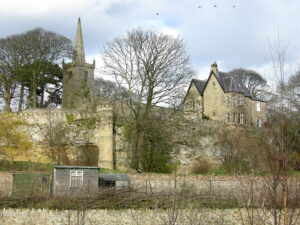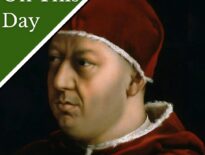 On this day in Tudor history, 12th March 1564, in the reign of Queen Elizabeth I, Roman Catholic priest and martyr Christopher Bales was baptised in Coniscliffe, in County Durham, in the north of England.
On this day in Tudor history, 12th March 1564, in the reign of Queen Elizabeth I, Roman Catholic priest and martyr Christopher Bales was baptised in Coniscliffe, in County Durham, in the north of England.
Bales ended up being executed by hanging on 4th March 1590.
Let me tell you a bit more about Bales and how he came to this sad end…
- Christopher Bales was the son of John Bales and his wife, Catherine.
- He came from a Protestant background and its not known what led to him entering the English College, a Catholic seminary, at Reims in France, in June 1581. He went on to enter Rome’s English College in October 1583, but returned to Reims in 1584 due to ill health.
- Bales was ordained as a priest in March 1587 and was sent back to England on a mission of conversion in November 1588.
- It is thought that he worked in London and that he used the names Rivers, Evers and Mallett.
- It wasn’t long before he was apprehended by the famous priest finder, Richard Topcliffe and imprisoned at Bridewell and then in the Gatehouse. Topcliffe interrogated and tortured him by racking him and also by suspending him by the hands for up to 24 hours at a time.
- Bales was found guilty of treason under the 1585 acts against Jesuits and seminary priests, for being ordained abroad and coming to England on a mission. At his trial, Bales asked the judge whether St Augustine, who was sent to convert the Saxons, was also therefore a traitor, but he was still condemned. He was executed in Fleet Street on 4th March 1590, under a placard stating that he was being punished for “For treason and favouring foreign invasion”. Two others, tailor Nicholas Horner and Alexander Blake, were executed at Smithfield and Grays Inn Lane, respectively, on the same day for helping and harbouring him.
Also on this day in Tudor history...
Image: Photo of High Coniscliffe by Linda Spashett.



Leave a Reply